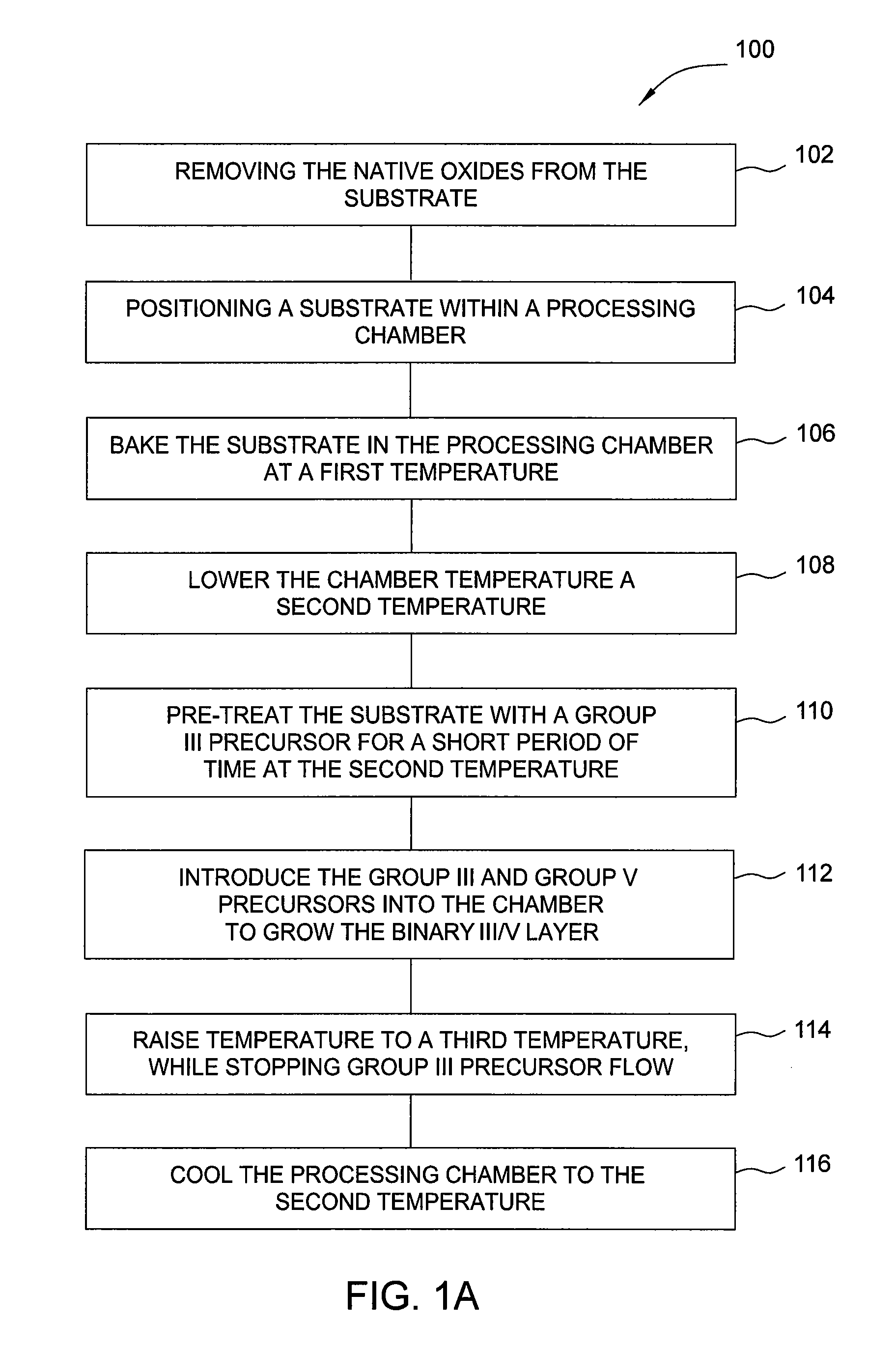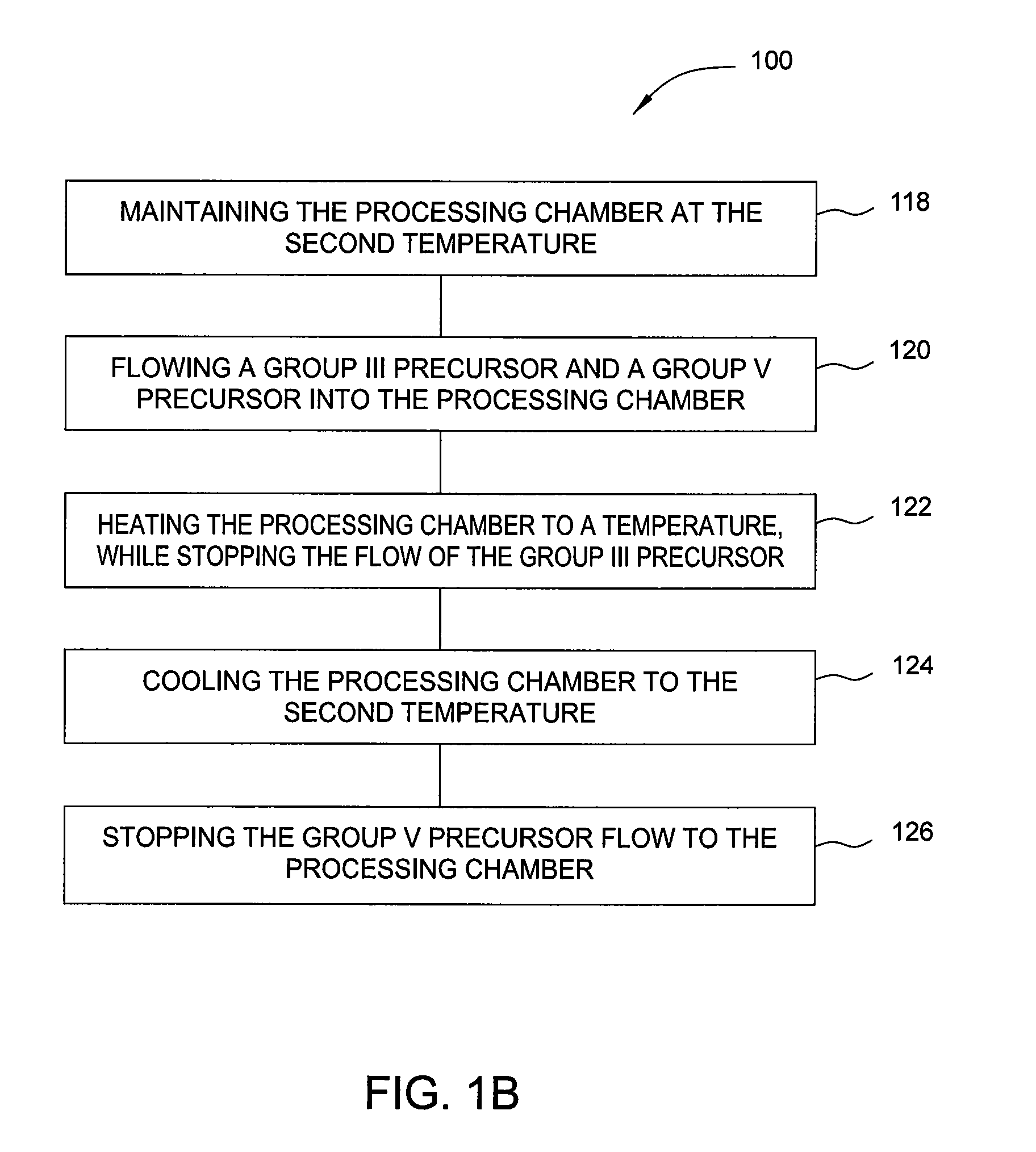Method for forming group III/V conformal layers on silicon substrates
a technology of conformal layers and silicon substrates, applied in the direction of crystal growth process, polycrystalline material growth, chemically reactive gases, etc., can solve the problems of generating defects, iii/v materials on silicon substrates, and many challenges
- Summary
- Abstract
- Description
- Claims
- Application Information
AI Technical Summary
Benefits of technology
Problems solved by technology
Method used
Image
Examples
Embodiment Construction
[0023]Embodiments of the invention generally relate to methods for forming group III / V materials on silicon surfaces and the resulting composition forming a buffer layer on a nucleation layer composed of a group III element. In one embodiment, a method for forming a conformal layer on a substrate is provided which can include removing the native oxide from the substrate, positioning a substrate within a processing chamber, heating the substrate to a first temperature, cooling the substrate to a second temperature, and flowing a group III precursor into the processing chamber. The group III precursor can be selected from all known group III precursors.
[0024]The first temperature, which can correspond to a post cleaning step, can range from about 400° C. to about 800° C., with preferred embodiments ranging from about 400° C. to about 500° C. The post cleaning step can be used to remove remaining contaminants from the surface of the substrate. The second temperature, which can correspo...
PUM
| Property | Measurement | Unit |
|---|---|---|
| temperature | aaaaa | aaaaa |
| temperature | aaaaa | aaaaa |
| temperature | aaaaa | aaaaa |
Abstract
Description
Claims
Application Information
 Login to View More
Login to View More - R&D
- Intellectual Property
- Life Sciences
- Materials
- Tech Scout
- Unparalleled Data Quality
- Higher Quality Content
- 60% Fewer Hallucinations
Browse by: Latest US Patents, China's latest patents, Technical Efficacy Thesaurus, Application Domain, Technology Topic, Popular Technical Reports.
© 2025 PatSnap. All rights reserved.Legal|Privacy policy|Modern Slavery Act Transparency Statement|Sitemap|About US| Contact US: help@patsnap.com



